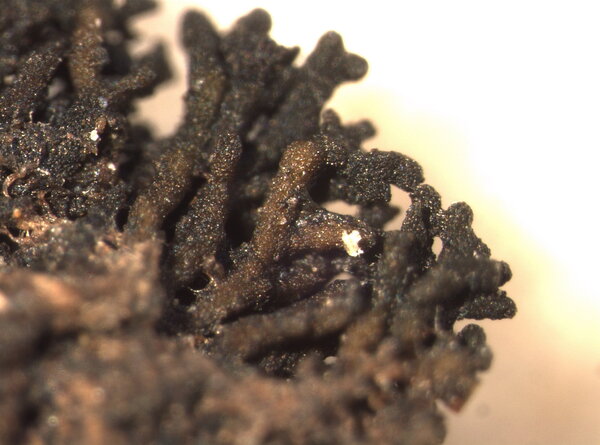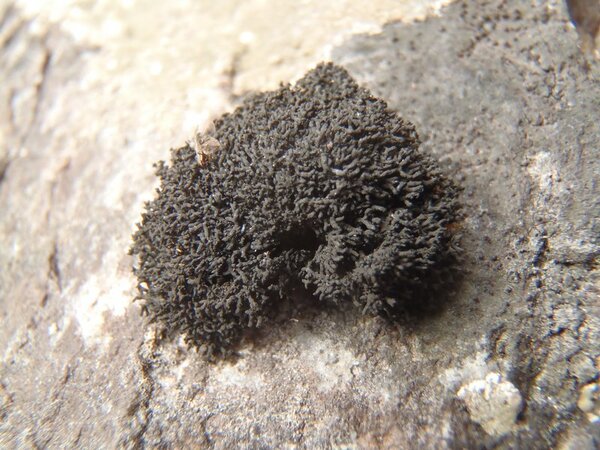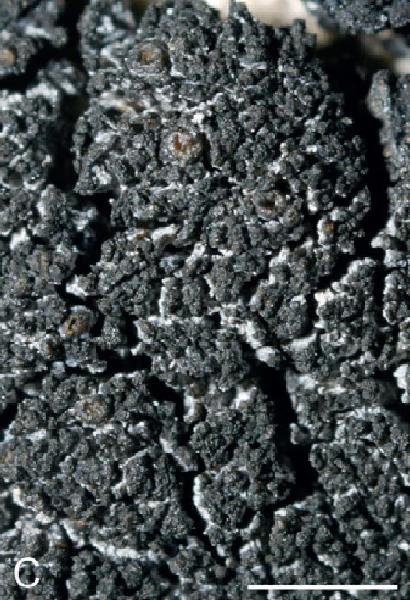Synalissina condensata (Arnold) M. Schultz & M. Prieto
in Prieto & al., Studies in Mycology: 109: 630, 2024.. Basionym: Plectopsora botryosa var. condensata Arnold - Verh. zool.-bot. Ges. Wien, 19: 655, 1869
Synonyms: Lempholemma condensatum (Arnold) Zahlbr.
Distribution: N - TAA.
Description: Thallus small-fruticose, homoiomerous, gelatinous when wet, dark olivaceous brown to black, consisting of 0.1-0.2(-0.3) mm thick and 1-2 mm long, simple or sparingly furcate, ascending to erect lobes, forming dense, (3-)5-10 mm wide patches or slightly convex cushions; apical hormocystangia absent. Apothecia rare, terminal, rounded, semi-immersed, up to 0.2 mm across, with a brown, finally convex disc, a thick thalline margin and a pale, thin proper margin, developing from ascogones arising in a spheroid tangle of generative hyphae. Proper exciple very thin, of parallel hyphae; epithecium brownish; hymenium colourless, the hymenial gel I+ reddish brown, K/I+ blue; paraphyses mostly simple, not apically thickened, coherent; hypothecium colourless. Asci 8-spored, broadly clavate, thin-walled, with a distinct amyloid outer cap, but no apical dome, Peccania-type. Ascospores 1-celled, hyaline, subglobose to broadly ellipsoid, (13-)15-18 x 6-10 μm. Photobiont cyanobacterial (Nostoc), the individual cells 4-5 μm wide, arranged in short chains. Spot tests: all negative. Chemistry: without lichen substances.Note: very closely related to L. intricatum, with thalli forming dense black cushions; on periodically wetted boulders and cliffs of dolomite and calcareous rocks, ecology otherwise poorly known; reported from scattered localities in the Eastern Alps, but distribution insufficiently known.
Growth form: Fruticose
Substrata: rocks
Photobiont: cyanobacteria, filamentous (e.g. Nostoc, Scytonema)
Reproductive strategy: mainly sexual
Poorly known taxon in need of further study
Commonnes-rarity: (info)
Alpine belt: absent
Subalpine belt: extremely rare
Oromediterranean belt: absent
Montane belt: extremely rare
Submediterranean belt: extremely rare
Padanian area: absent
Humid submediterranean belt: absent
Humid mediterranean belt: absent
Dry mediterranean belt: absent
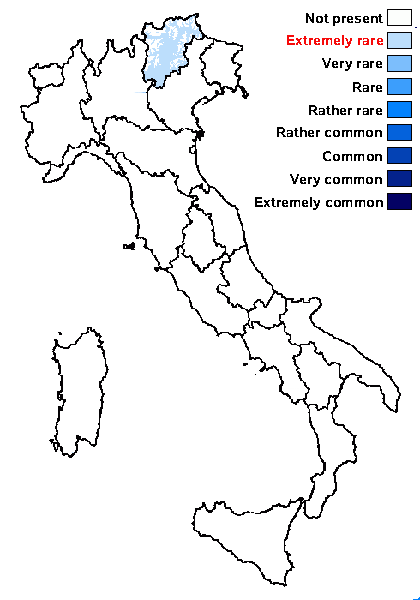
Predictive model
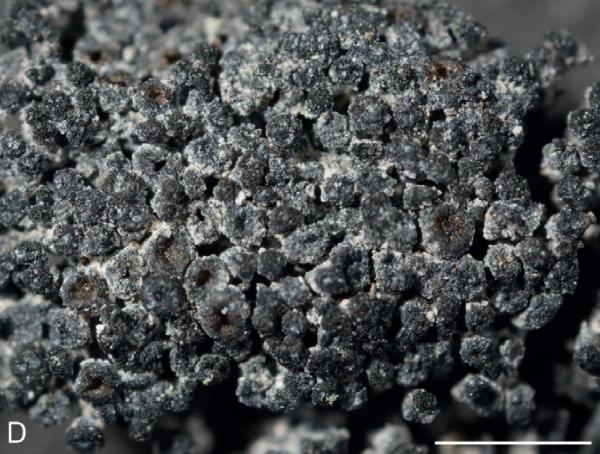
Source: Prieto M., Wedin M., Schultz M. 2024. Phylogeny, evolution and a re-classification of the Lichinomycetes. Studies in Mycology, 109: 595-655. - CC BY-NC-ND
Synalissina condensata, squamules bluish grey pruinose, stout,
erect and densely aggregated, tips with small apothecia and concave discs (Groner 4014). Scale bar: 1 mm
Growth form: Fruticose
Substrata: rocks
Photobiont: cyanobacteria, filamentous (e.g. Nostoc, Scytonema)
Reproductive strategy: mainly sexual
Poorly known taxon in need of further study
Commonnes-rarity: (info)
Alpine belt: absent
Subalpine belt: extremely rare
Oromediterranean belt: absent
Montane belt: extremely rare
Submediterranean belt: extremely rare
Padanian area: absent
Humid submediterranean belt: absent
Humid mediterranean belt: absent
Dry mediterranean belt: absent

Predictive model

 DOLICHENS
DOLICHENS
